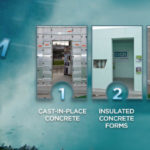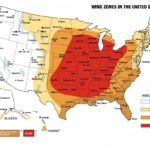As we continue to learn more about the devastation in Oklahoma from the EF-5 tornado that struck the city of Moore and surrounding areas on Monday, many building professionals and homeowners are questioning the safety of their homes and other structures in tornado-prone areas. Winds of the recent storm reached speeds up to 210 miles per hour and destroyed hundreds of homes, businesses, schools and hospitals. Many structures were leveled to their foundations. The question that is posed after an event like this is – can you build a tornado-resistant home or structure?
A recent article in the Huffington Post asked that question to several design professionals, including our own resident code expert, Randy Shackelford, P.E., a Simpson Strong-Tie engineer based in McKinney, Texas. While designing a tornado-proof home is not practical or economical, properly designed storm shelters can save lives. Take a look at the Huffington Post article here.
Last year, I wrote a post about Building a Storm Shelter to ICC-500 Design Requirements, which presents the most economical solution to resisting the strongest of tornadoes. We’ve also covered this topic from various angles in the blog, from design – a post about Code-Plus Programs that provides some guidelines for building structures that are more resistant to hazards than what the code requires, Designing Light-Frame Wood Structures for Resisting Tornadoes and checking for Building Drift – to addressing specific parts of a structure, such as Preventing Roof Tiles from Becoming Wind-Borne Debris and Roof Deck Design Considerations for High Wind Events. Our Technical Bulletin about how to strengthen dwellings in tornado-prone areas provides further information.
Our thoughts and prayers continue to be with everyone affected by the Oklahoma tornado. We are thankful to report that our local sales reps and families in that area are safe. If you have additional thoughts about the tornado and storm protection, please leave me a comment.
– Paul
What are your thoughts? Visit the blog and leave a comment!






You can build a tornado resistant building shell at an affordable cost. It’s done every day in Florida. These structures have passed the test of resisting real tornados. The exterior walls, and shear walls are made of cast-in-place, reinforced concrete. They are cast using hand set, aluminum forms. Simpson C-16 straps are used as hold-downs for the roof trusses and rafters. Other methods include using insulated concrete forms, and concrete sandwich walls. All of these methods pass the 250+mph wind and debris test. A wooden roof properly attached to any of these walls will survive attached with Simpson products, assuming the gables are also cast-in-place concrete. Since few people in this country use concrete walls in residential construction, most are simply ignorant of its actual cost. Depending on the technology used, and the geometry of the house, a concrete shell normally ads about 1-6% to the total building cost. But, in tornado alley it isn’t about the money. It’s about safety, and loss. I just came from Moore, I’m going back there today. Simpson has a place in concrete residential construction. I would like to see more products targeted for mixing wood with concrete shells.
I agree with the article that tornado-PROOF is not practical, but tornado-RESISTANT is. I really wish that the design community would be standing up and stepping forward more and saying, “We can do better, we don’t need to accept miles wide swaths of destruction, we can do better.”
There is a really good report on damage assessment after a tornado here:
http://www.strongtie.com/ftp/articles/TuscaloosaTornadoReport2011.pdf
It also makes the point that we can do better. We can narrow the swath of destruction, and it is both practical and cost-effective to do so.